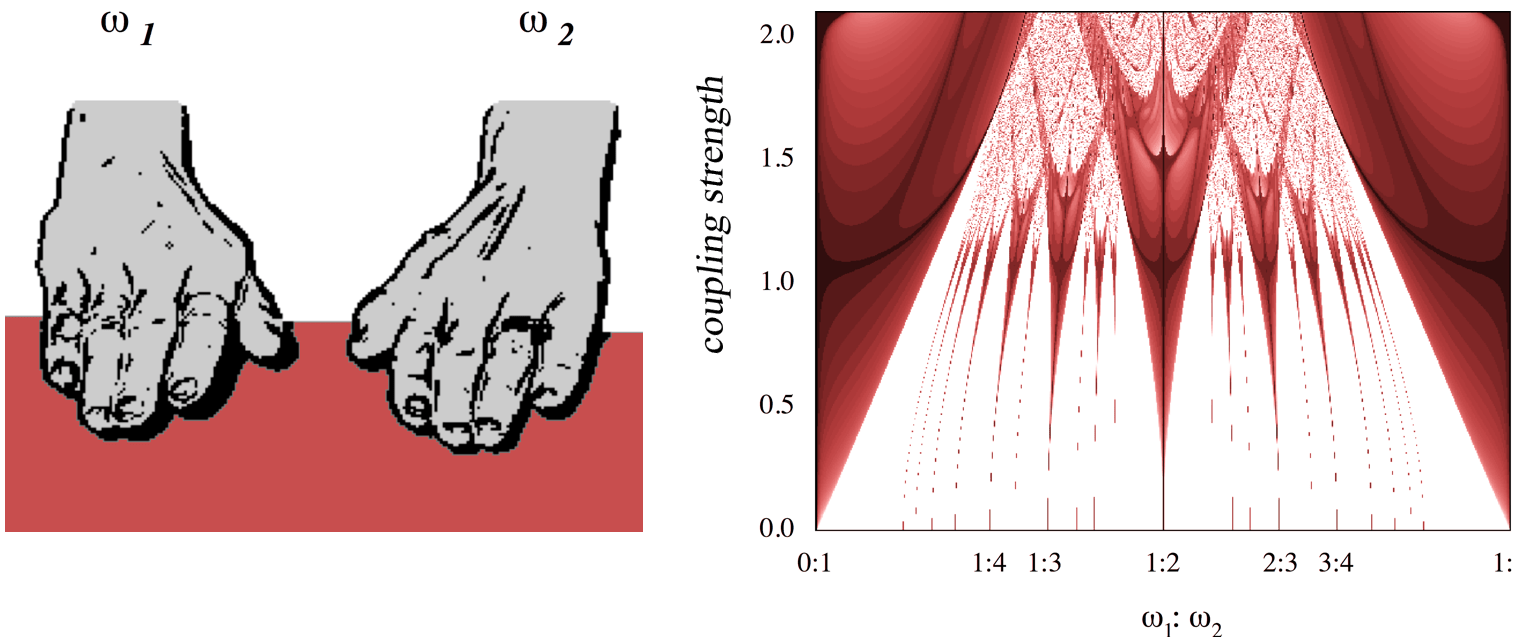Bimanual Coordination
For most of us playing the piano forms a major hurdle as moving our hands and fingers accurately and independently is easier said than done. Does this difficulty stem from a cross-talk by which activity from one side spills over to the other side of the body? In contrast to current beliefs we submit that bimanual activity is the primary vehicle of control for all limb movements, unilateral and bilateral. This hypothesis derives from the notion that the structural symmetry of the central nervous system yields cross-talk, in particular when the movement-related neural activity becomes synchronized. Unimanual performance is thus achieved via an active suppression of the contralateral limb, that is, through inhibition of corresponding motor areas.
- We are testing this idea by building on our vast experience on behavioral paradigms on rhythmic upper limb coordination. The experimental tasks differ in precision and intention so as to modulate the difficulty of performance and, by hypothesis, the degree of cross-talk and energy expenditure.
- We co-register the magneto- and electro-encephalogram (M/EEG) to assess accompanying cortical synchronization patterns. To test for correlations between left/right cross-talk we also monitor the corresponding metabolism using functional MRI and estimate structural connectivity via DTI.

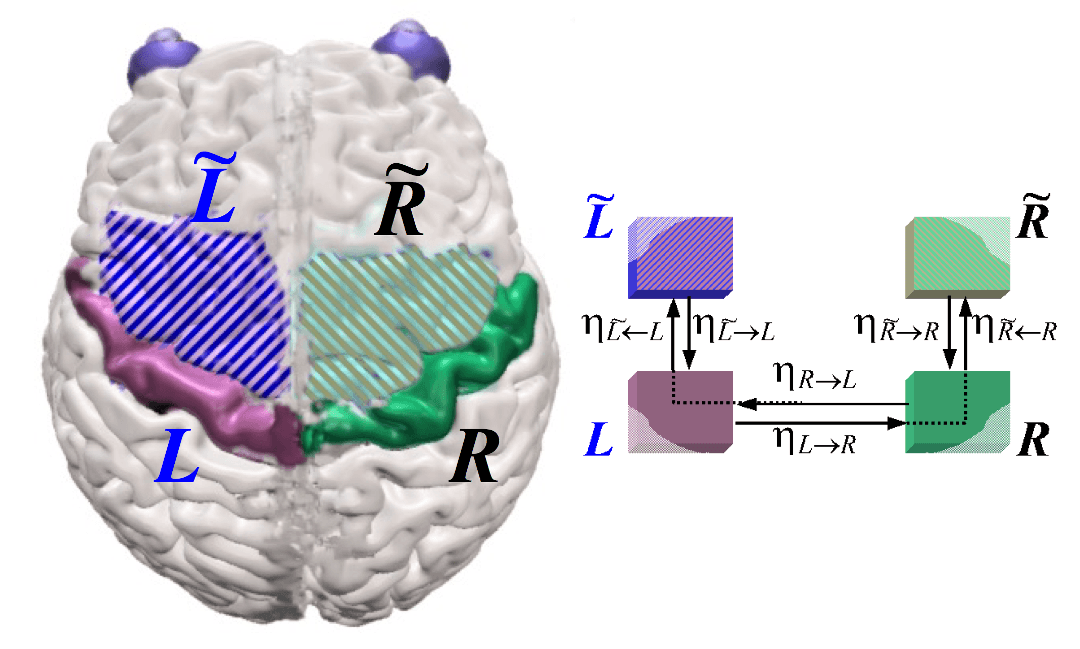
We capitalize on a heuristic model for bimanual coordination and its accompanying neural activities. The model predicts changes in behavioral stability due to (a loss of) time-scale separation between cross-talk related amplitude and phase dynam- ics. By introducing directionality into the model, the cross-talk becomes consistent with confirmed findings that hand-specific coding also exists and that interactions occur between the motor commands for each arm. Uncrossed efferent projections may underlie cross-talk at an executional level and dynamic interactions through the corpus callosum may provide a high-level link at the parametric programming level, allowing for flexible (de-)coupling.
Related Publications
Roerdink, M., Ridderikhoff, A., Peper, C. E. & Beek, P. J. 2013 In : Annals of Biomedical Engineering. 41, 8, p. 1726-1739
Anchoring in rhythmic in-phase and antiphase visuomotor tracking
Roerdink, M., Bank, P. J. M., Peper, C. E. & Beek, P. J. 2013 In : Motor Control. 17, 2, p. 176-189 14 p.
Learning a new bimanual coordination pattern: Interlimb interactions, attentional focus, and transfer
de Boer, B. J., Peper, C. E. & Beek, P. J. 2013 In : Journal of Motor Behavior. 45, 1, p. 65-77 18 p.
Development of temporal and spatial bimanual coordination during childhood
de Boer, B. J., Peper, C. E. & Beek, P. J. 2012 In : Motor Control. 16, 4, p. 537-559
Frequency-induced changes in interlimb interactions: Increasing manifestations of closed-loop control
de Boer, B. J., Peper, C. E. & Beek, P. J. 2011 In : Behavioural Brain Research. 220, 1, p. 202-214 13 p.
Disentangling the effects of attentional and amplitude asymmetries on relative phase dynamics
de Poel, H. J., Peper, C. E. & Beek, P. J. 2009 In : Journal of Experimental Psychology: Human Perception and Performance.35, 3, p. 762-777
Laterally focused attention modulates asymmetric coupling in rhythmic interlimb coordination
de Poel, H. J., Peper, C. E. & Beek, P. J. 2008 In : Psychological Research. 72, 2, p. 123-137
Visual and musculoskeletal underpinnings of anchoring in rhythmic visuo-motor tracking
Roerdink, M., Ophoff, E. D., Peper, C. E. & Beek, P. J. 2008 In : Experimental Brain Research. 184, 2, p. 143-156
Attentional loads associated with interlimb interactions underlying rhythmic bimanual coordination
Ridderikhoff, A., Peper, C. E. & Beek, P. J. 2008 In : Cognition. 109, 3, p. 372-388
Interlimb coupling strength scales with movement amplitude.
Peper, C. E., de Boer, B. J., de Poel, H. J. & Beek, P. J. 2008 In : Neuroscience Letters. 437, p. 10-14
Error correction in bimanual coordination benefits from bilateral muscle activity: evidence from kinesthetic tracking
Ridderikhoff, A., Peper, C. E. & Beek, P. J. 2007 In : Experimental Brain Research. 181, p. 31-48
Handedness-related asymmetry in coupling strength in bimanual coordination: furthering theory and evidence
de Poel, H. J., Peper, C. E. & Beek, P. J. 2007 In : Acta Psychologica. 124, 2, p. 209-237
Pattern stability and error correction during in-phase and antiphase four-ball juggling
Dessing, J. C., Daffertshofer, A., Peper, C. E. & Beek, P. J. 2007 In : Journal of Motor Behavior. 39, p. 433-446
Bilateral phase entrainment by movement-elicited afference contributes equally to the stability of in-phase and antiphase coordination
Ridderikhoff, A., Peper, C. E. & Beek, P. J. 2006 In : Neuroscience Letters. 399, p. 71-5
Intentional switches between bimanual coordination patterns are primarily effectuated by the nondominant hand
de Poel, H. J., Peper, C. E. & Beek, P. J. 2006 In : Motor Control. 10, 2, p. 7-23 18 p.
Effects of correct and transformed visual feedback on rhythmic visuo-motor tracking: Tracking performance and visual search behavior
Roerdink, M., Peper, C. E. & Beek, P. J. 2005 In : Human Movement Science. 24, p. 379-402
Unraveling interlimb interactions underlying bimanual coordination
Ridderikhoff, A., Daffertshofer, A., Peper, C. E. & Beek, P. J. 2005 In : Journal of Neurophysiology. 94, p. 3112-25
Movement-related sensory feedback mediates the learning of a new bimanual relative phase pattern
Atchy-Dalama, P., Peper, C. E., Zanone, P. G. & Beek, P. J. 2005 In : Journal of Motor Behavior. 37, p. 186-96
Stabilization of bimanual coordination due to active interhemispheric inhibition: a dynamical account
Daffertshofer, A., Peper, C. E. & Beek, P. J. 2005 In : Biological Cybernetics. 92, p. 101-9 PDF (185 KB) | Google Scholar
Effector dynamics of rhythmic wrist activity and its implications for (modeling) bimanual coordination
Ridderikhoff, A., Peper, C. E., Carson, R. G. & Beek, P. J. 2004 In : Human Movement Science. 23, p. 285-313
Explanatory limitations of the HKB model: Incentives for a two-tiered model of rhythmic interlimb coordination
Peper, C. E., Ridderikhoff, A., Daffertshofer, A. & Beek, P. J. 2004 In : Human Movement Science. 23, p. 673-697
Are frequency-induced transitions in rhythmic coordination mediated by a drop in amplitude?
Peper, C. E. & Beek, P. J. 1998 In : Biological Cybernetics. 79, 4, p. 291-300 10 p.
Distinguishing between the effects of frequency and amplitude on interlimb coupling in tapping a 2:3 polyrhythm
Peper, C. E. & Beek, P. J. 1998 In : Experimental Brain Research. 118, 1, p. 78-92 14 p.
A model for phase transitions in human hand movements during multifrequency tapping
Haken, H., Peper, C. E., Beek, P. J. & Daffertshofer, A. 1996 In : Physica D. Nonlinear Phenomena. 90, p. 179-196
Dynamical models of movement coordination
Beek, P. J., Peper, C. E. & Stegeman, D. F. 1995 In : Human Movement Science. 14, p. 573-608
Coupling strength in tapping a 2:3 polyrhythm
Peper, C. E., Beek, P. J. & van Wieringen, P. C. W. 1995 In : Human Movement Science. 14, p. 217-245
Multifrequency coordination in bimanual tapping: Asymmetrical coupling and signs of supercriticality
Peper, C. E., Beek, P. J. & van Wieringen, P. C. W. 1995 In : Journal of Experimental Psychology: Human Perception and Performance. 21, p. 1117-1138
Frequency-induced transitions in bimanual tapping
Peper, C. E., Beek, P. J. & van Wieringen, P. C. W. 1995 In : Biological Cybernetics. 73, p. 301-309
Research Partners
Related Research Themes & Projects
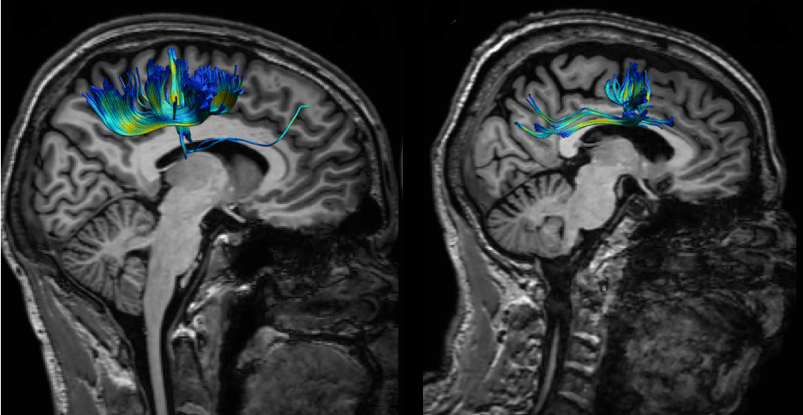
Age effects in bimanual coordination
We study the relationship between altered inter- and intra-hemispheric structural and functional connectivities in the motor the network. Our focus is on the correlation between connectivies and declined motor performance in the elderly.
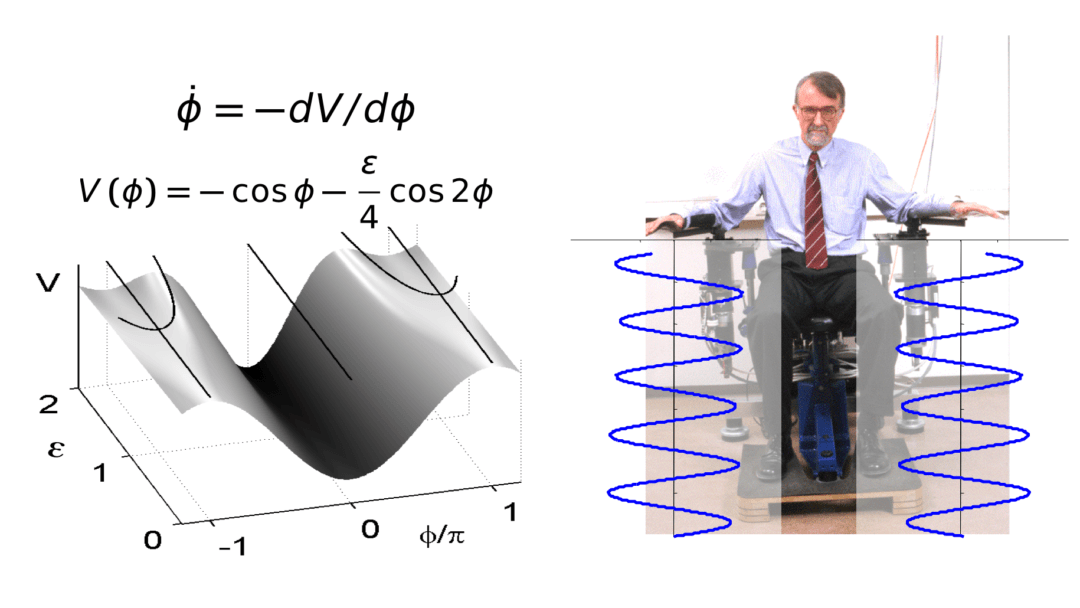
Relative Phase Dynamics
The stability of coordination can often be addressed via the relative phase between the individual limb movements. We are studying in detail the effect of different interactions between limbs, effects of noise and non-autonomous forcing.
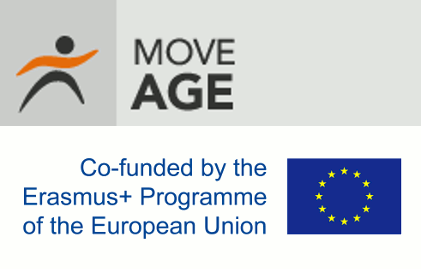
Move-Age
Understanding Ageing and Mobility. Funded by the EU as part of the Erasmus Mundus program, this international training network involves 40-odd PhD students studying age-related changes in human movement.
